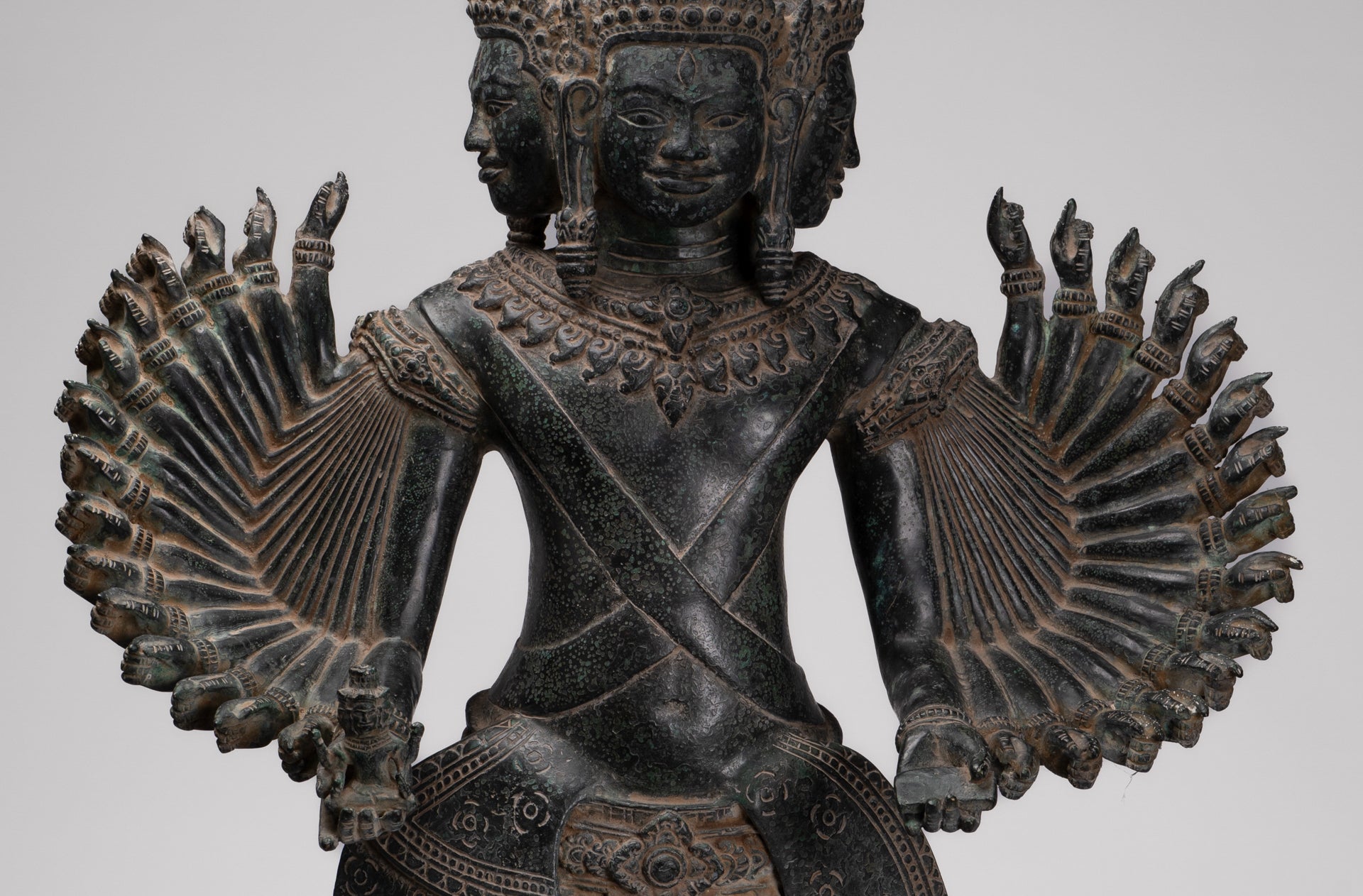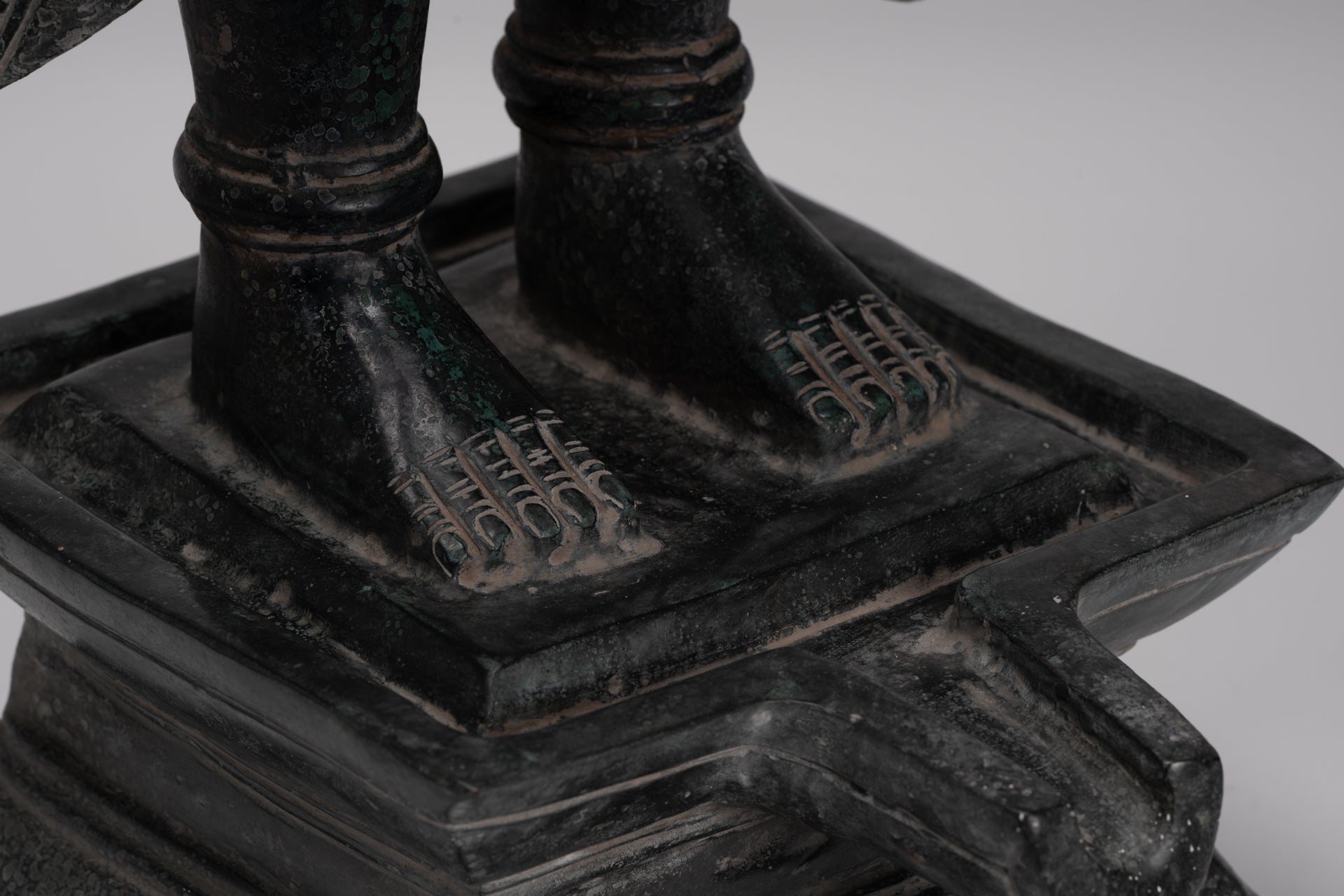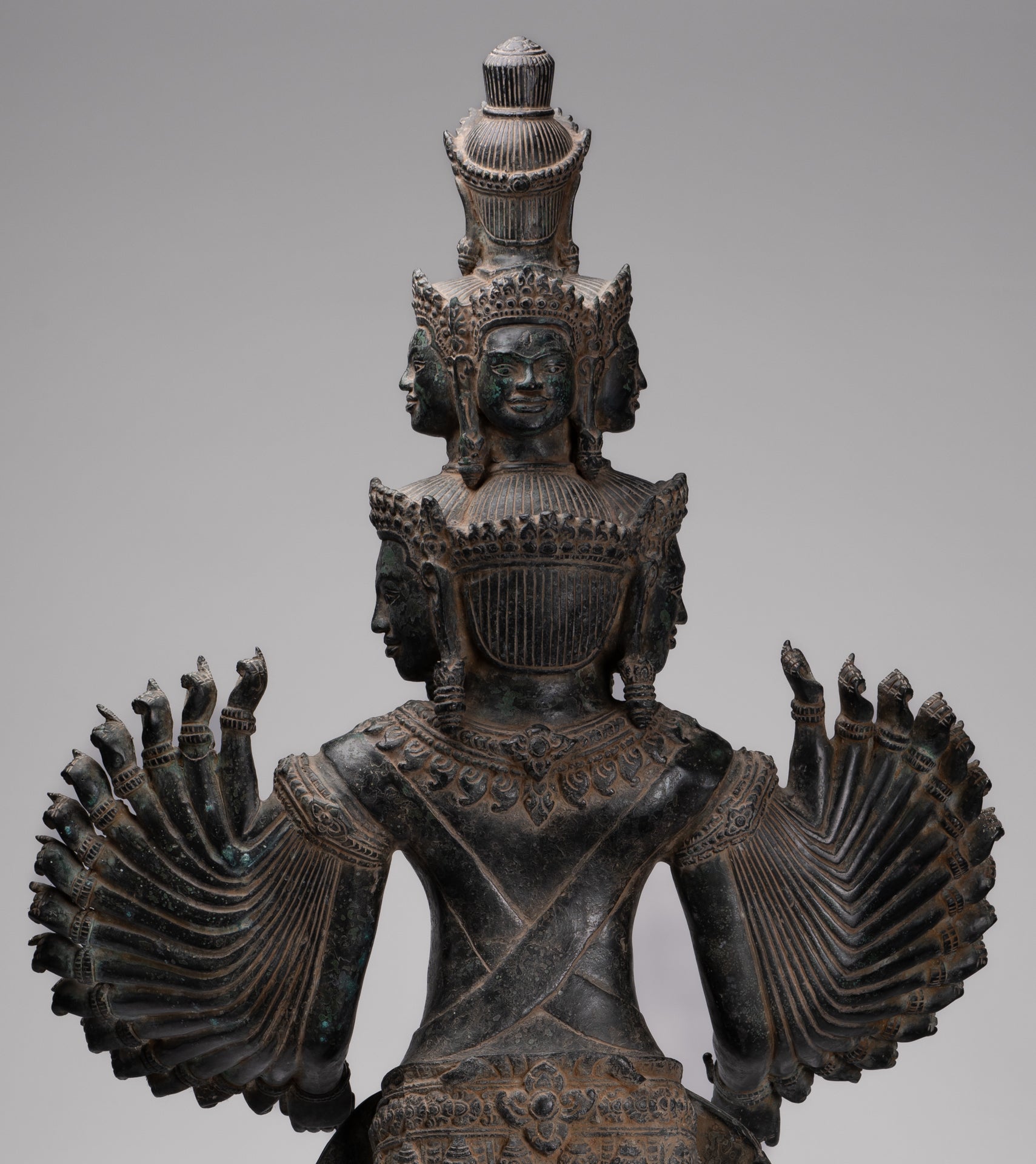-
Deity Statue - Antique Khmer Style Angkor Wat Prajnaparamita Statue / Goddess - 110cm/44"
Measures (Height) 110cm/44"
An antique Khmer style Prajnaparamita, devi or Goddess statue in 12th century Angkor Wat style. Prajnaparamita, symbolises the perfection of Wisdom and was considered the mother of all Buddhas. A sculpture perfect for those seeking both beauty and wisdom.
The concept of Prajnaparamita originates from Mahayana Buddhism, where she represents the perfection of wisdom (Prajna) and the ultimate truth. The Prajnaparamita sutras, a collection of Mahayana texts, expound on this profound wisdom, which transcends conventional understanding and leads to enlightenment. In these texts, Prajnaparamita is often personified as a deity, symbolizing the wisdom that goes beyond the mundane to grasp the true nature of reality.
Here, Prajnaparamita stands samabhanga on a Yoni pedestal. The Yoni symbolizes the divine feminine energy, representing the cosmic womb from which all life emerges. The word "yoni" translates to "source" or "origin" and signifies, as does Brahma, the primordial source of creation.
She is clothed in an ornate, long pleated sampot and belt, with a double fish tail pleat at the hem. This is typical of the Angkor Wat style. Her hair is tied with a bead band into a rounded and complex chignon with a lotus bud on top. The lotus flower represents purity, compassion and the giving of great joy to all.
Her three tiered head, the first two tiers featuring four cardinal faces, peering left and right, North and South. This demonstrates an omnidirectional awareness and a spirtual capacity to comprehend and understand all realms and dimensions.
The figure is beautifully lost wax cast with superb details. The inner rims of the ears are scalloped and three indented beauty lines mark the neck, in traditional Khmer style.
In her left hand she holds a Sutra. A sutra refers to an aphorism - a memorable expression of a general truth or principle. Sutras are a genre of ancient ad medieval texts found in Hinduism, Buddhism and Jainism.
In her right hand, Brahma. Brahma is the Hindu God of Creation and one of the Trimurti, the others being Vishnu and Shiva.
Prajnaparamita was greatly revered by the Khmer during the tenth century and was the only Buddist Goddess praised in contemporary Khmer inscriptions.
Prajnaparamita, as a deity embodying transcendent wisdom, holds a revered place in Khmer culture and religious practice. Her depiction in art and architecture during the Khmer Empire highlights the cultural and spiritual significance attributed to wisdom and enlightenment.
The patina and details of this piece are particularly appealing. This traditional in appearance piece is sure to add a unique touch to any room of your home or workplace.
SATISFACTION GUARANTEE - We have been offering Asian Art for many years and are proud of the reputation we have developed for fair and honest listings. However, if for any reason, whatsoever, you are unhappy with your purchase please just let us know and we will provide a full refund. We want you to be 100% happy with your purchase.
-
The majority of orders will be shipped with DHL. This is a secure, express and fully tracked service.
Items less than 2Kg we typically ship using Royal Mail.
Once we receive your order we try to ship all orders the same or next working day.
Large and/or fragile pieces requiring palletising, specialist crating and/or extra packaging may take a little longer. Palletised shipments will be delivered curbside.
All orders over 35 GBP will be shipped free of charge.

-
We genuinely hope that all purchases delight.
However, if they do not, regardless of reason, we will refund all orders upon receipt of the unwanted item. Just notify us within 14 days of receiving your order that you wish to make a return and send the piece back to us with 30 days of delivery.
Ganesh embodies wisdom, prosperity, and the removal of obstacles, making him one of the most beloved deities in Hindu tradition.
His presence in art, architecture, and daily spiritual practice reflects his significance as both a protector and a guide for those seeking success and inner growth.




















































